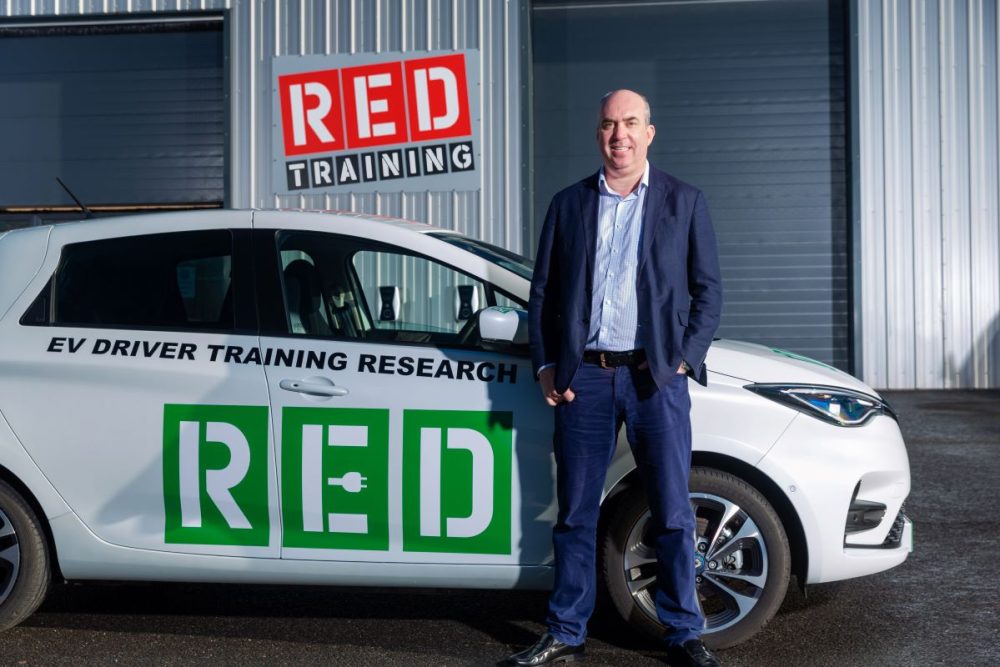THE huge increase in popularity of salary sacrifice schemes could create major risk blindspots for companies if not managed properly, says RED Corporate Driver Training.
The schemes, in which employees who usually do not qualify for a company car can take advantage of low tax rates for electric vehicles in return for a company supplied EV, paid from their salary before income tax and National Insurance is applied, have opened up a huge number of drivers to corporate motoring and new cars.
However, RED believes the risk profiles of these drivers are largely unknown to their employers, and without proper management could see costs rise dramatically for both employee and employer.
“Salary sacrifice schemes are a fantastic way to get employees into a new electric car,” said RED Corporate Driver Training Chief Executive Seb Goldin. “The issue is that these drivers may have done some business mileage previously in their own car, but now they are likely to be driving far more expensive electric vehicles, with service, maintenance and repair organised through their employer. This needs to be risk managed carefully or costs such as insurance could rise over the time the scheme is in place.”
According to figures published by the British Vehicle Rental and Leasing Association, salary sacrifice numbers have grown 54% year-on-year, with more than 55,000 employees signed up to schemes now.
“As the sal sac fleet expands quickly, you could lose control of it. Employees choosing sal sac might have come out of private cars, and so this is their first experience of a leased vehicle, and the particular demands of looking after that,” said Goldin.
“Risk management applies to salary sacrifice as much as to conventional company cars: employees that don’t look after their cars, cost a lot in repairs and servicing will result in the employer paying more for insurance and the provider upping maintenance package charges over time.
“In many cases the employers pay for the salary sacrifice cars in their own fleet insurance, so it’s essential that drivers are managed from a risk perspective. If you just hand a load of employees salary sacrifice cars and let them get on with it, if they then cause a lot of damage, when the insurance comes to be renewed you could find yourself with a considerably higher bill. Now, how do you pass than on as part of the monthly cost to your employees?
“It’s a difficult conversation to have, saying that their take home pay is going to be less than previously because of the poor driving behaviour of the staff as a whole. It could lead to a fairly interesting office environment.”
In other cases, says RED, the insurance is paid at a fixed price as part of the package over the term of the lease, which for the first few years guards against any rise in premiums. But there will come a time when the supplier looks at those premiums, and the sal sac fleet’s driving behaviours and costs, and recalculates for the next lifecycle.
“At this point, you want to know your sal sac fleet, and drivers, have been managed so that your conversations with your supplier are good ones and any rises are kept to a minimum,” he said.
Harvey Perkins, director at fleet taxation specialist HRUX, advises companies on salary sacrifice and says that managing insurance is a vital part of any scheme.
“On the whole, drivers in sal sac cars tend to treat them as a private car driver would, which is often better than the average company car driver, and these schemes quite rightly are proving to be hugely popular and very successful,” he said.
“But we have seen some pushback from fleet insurers, not because they expect sacrifice cars to be driven further or badly, but just because of the unknown. Many fleet insurers have years’ worth of usage data to base premiums on, but they have no idea what claims experience with salary sacrifice drivers will be like. This is where managing these drivers’ risk will prove a massive advantage when it comes to keeping costs down.”
Also, said Seb Goldin, salary sacrifice drivers seem to cover more mileage than the average driver: Tusker, a pioneer in salary sacrifice, reported recently that one in four drivers cover more than 200 miles a week in their electric car – which is above the average for UK drivers.
“Why wouldn’t you want to drive more?” said Goldin. “You’ve been able to get into a fabulous new electric car at a very competitive price. No doubt these drivers are keen to get out on the road. But again, it’s really important to manage their business mileage, and ensure that not only are they within the mileage parameters of their contract, but they are also looking after tyres and getting them changed when they should, as well as getting their car serviced according to schedules.
“These are all things a business would be doing with its company car and vans, and it all applies to the salary sacrifice fleet too.”
RED Corporate Driver Training’s SafetyFirst risk management platform has functions in both its company car and grey fleet dashboards which can be applied to the particular risk demands of salary sacrifice.
Fleet managers or HR departments can check licences, send employees policy documents about the responsibilities of running their sal sac car legally, and set reminders about servicing and maintenance, and even schedule training for those who seem to be higher risk.
“Salary sacrifice is a brilliant product and getting employees into new, clean cars is a good thing,” said Goldin. “But allied to that is the need to manage risk to ensure that you can continue to offer safe, great value motoring for many years to come. With SafetyFirst you can make this happen.”








